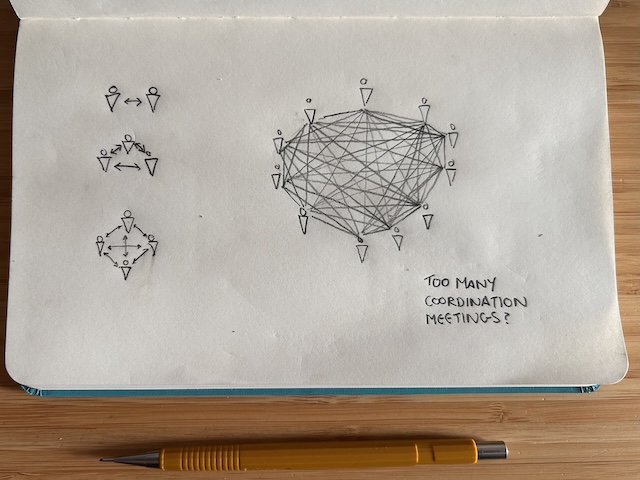Do you ever feel that all you do is sit in coordination meetings?
If two people work together, then there is one relationship to manage.
By manage, I mean checking in with each other, setting goals, coordinating activity, giving feedback etc.
If three people work together, there’s three individual relationships to manage.
If four people work together, there’s six relationships.
If ten people work together, there’s 45 relationships to manage.
You get the picture. The number of relationships in a group of people quickly blows up as the group size grows.
For a group of n people, the number of individual relationships is n(n-1)/2. In other words, it’s a squared relationship.
And if the number of relationships goes up, so does the number of coordination meetings.
Of course, the reason for growing the number of people in the team is usually to gain productivity. But the gain in productivity has to outweigh the admin burden of coordination.
Doubling the team size means quadrupling the amount of coordination. But does doubling team size really increase output by a factor of 4? If the admin overhead is going up quicker than the output, then productivity is going down.
It’s no wonder that people complain that they are in back-to-back meetings and can’t get any work done.
Perhaps the system has got too large — the means no-longer justify the ends.

